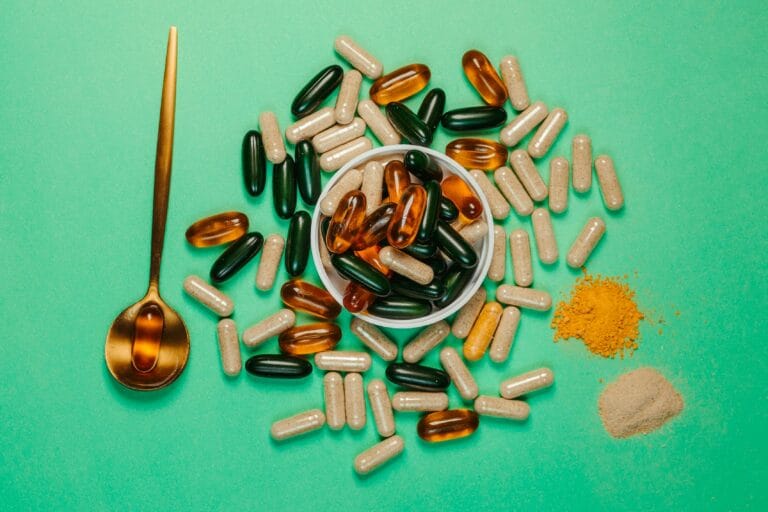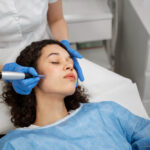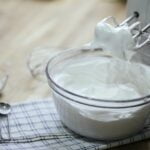FREE SHIPPING OVER $50
The One Thing Dermatologists Are Begging You to Never, Ever Do
When it comes to skincare, dermatologists have seen it all—good habits, bad habits, and some habits that are outright damaging. There’s one habit, though, that they unanimously agree can do serious harm to your skin: popping or squeezing pimples. Despite the temptation, picking at acne can lead to long-lasting skin issues. Here’s why dermatologists want you to leave your skin alone, along with healthier ways to treat blemishes and support clear, radiant skin.
Why You Should Never Pop or Squeeze Pimples

1. Increased Risk of Infection
When you squeeze a pimple, you may think you’re just removing oil and bacteria, but often, you’re pushing that same bacteria and oil deeper into the skin. This can lead to a more serious infection below the skin’s surface, resulting in a larger, more painful blemish. Bacteria from your hands or nails can also introduce new germs into the area, further aggravating the issue.
2. Scarring and Hyperpigmentation
One of the main reasons dermatologists advise against popping pimples is the risk of scarring. Picking can cause the skin to break down, making it more prone to scars that can be difficult or impossible to fully fade. Even if you don’t scar, squeezing pimples often leads to post-inflammatory hyperpigmentation—dark spots that can take months to heal.
3. Delay in the Healing Process
Popping pimples can create an open wound, which takes longer to heal than a pimple left undisturbed. This can delay your skin’s natural healing process by days or even weeks, leaving you with a longer-lasting blemish. The more you pick at a blemish, the longer it sticks around.
What Dermatologists Recommend Instead
So, if you’re not supposed to pop pimples, what should you do when a breakout happens? Dermatologists suggest these science-backed methods for managing acne safely.
- Use Spot Treatments with Active Ingredients
Look for over-the-counter treatments that contain ingredients like benzoyl peroxide, salicylic acid, or sulfur. These can reduce redness, kill acne-causing bacteria, and speed up the healing process without causing damage to the skin. Many of these ingredients can also help prevent future breakouts when used as part of a regular skincare routine. - Try an Ice Compress
If your pimple is red and inflamed, applying a cold compress can reduce swelling and discomfort. Wrap a piece of ice in a soft cloth and apply it to the affected area for a few minutes at a time. This reduces redness and puffiness, helping the pimple to heal naturally without further irritation. - Use a Warm Compress for Cystic Acne
For deeper cystic acne, a warm compress can help reduce swelling and bring the pimple closer to the skin’s surface, making it easier to treat without popping. Place a warm, damp cloth on the cyst for a few minutes twice a day. This method encourages natural drainage and can relieve some of the discomfort associated with cystic pimples.
The Long-Term Effects of Popping Pimples
Constantly picking at your skin doesn’t just lead to short-term breakouts; it can also affect your skin’s texture and tone in the long run. Frequent picking can lead to skin thickening and uneven texture, known as lichenification. Over time, this can create patches of skin that are rough or discolored, making it harder to achieve a smooth, even complexion.
Additional Tips for Healthy, Clear Skin
To support clear skin and reduce the temptation to pick at breakouts, dermatologists recommend developing a consistent skincare routine that includes gentle cleansing, moisturizing, and protecting your skin from the sun. Here’s how you can build a skin-friendly regimen:
- Cleanse Gently, Twice Daily
Washing your face twice a day with a mild, non-comedogenic cleanser can remove excess oil, bacteria, and other impurities without drying out the skin. Avoid using overly harsh scrubs, as these can irritate the skin, leading to more breakouts. - Moisturize, Even If You Have Acne-Prone Skin
Some people with acne avoid moisturizers, fearing that they’ll make their skin oilier. However, a good moisturizer can help maintain the skin’s moisture barrier and balance oil production, reducing the likelihood of breakouts. Opt for lightweight, oil-free moisturizers with ingredients like hyaluronic acid. - Use Sunscreen Daily
Sun protection is vital for all skin types. In addition to protecting against premature aging and sun damage, wearing sunscreen helps prevent dark spots and hyperpigmentation from acne scars. Choose a broad-spectrum SPF of at least 30 and reapply throughout the day if you’re outside. - Use Antioxidant-Rich Products
Topical antioxidants like vitamin C, vitamin E, and niacinamide help protect your skin from free radicals, which are unstable molecules that cause premature aging and damage to skin cells.. - Balance Your Diet with Skin-Healthy Nutrients
Eating a diet rich in vitamins, minerals, and healthy fats supports skin health from the inside out. Nutrients like omega-3 fatty acids (found in fish and flaxseeds), vitamin E (in nuts and seeds), and vitamin A (in leafy greens and carrots) promote cell turnover and skin barrier health.
When to See a Dermatologist
If you struggle with frequent breakouts, it might be time to consult a dermatologist. Persistent acne can often be a sign of hormonal imbalances, diet-related issues, or other underlying conditions that require professional treatment. A dermatologist can help you design a skincare routine and recommend prescription options if over-the-counter treatments aren’t effective.
Final Thoughts
Breaking the habit of popping pimples is tough, but your skin will thank you. By resisting the urge to pick and adopting healthier skincare practices, you can help prevent infections, reduce scarring, and support your skin’s natural healing process. Remember, even though a blemish might feel like a big deal in the moment, it’s much better to let your skin heal on its own.
Related Articles
- 6 Skincare Ingredients You Should Avoid After 40, According to Dermatologists
- The 10 K-Beauty Trends Everyone Over 40 Should Be Using for Firmer, Plumper Skin
- Why Koreans Have the Best Skin: The No. 1 Skincare Ritual They Never Skip for Perfect Pores
- Korea’s Best-Kept Skincare Secret: The Must-Have Product for Bright, Youthful Skin After 40
- Want Smoother, Firmer Skin? Doctors Suggest Eating These Anti-Aging Foods for a Noticeable Lift
- Top 10 Skin Tightening Creams Recommended by Dermatologists







